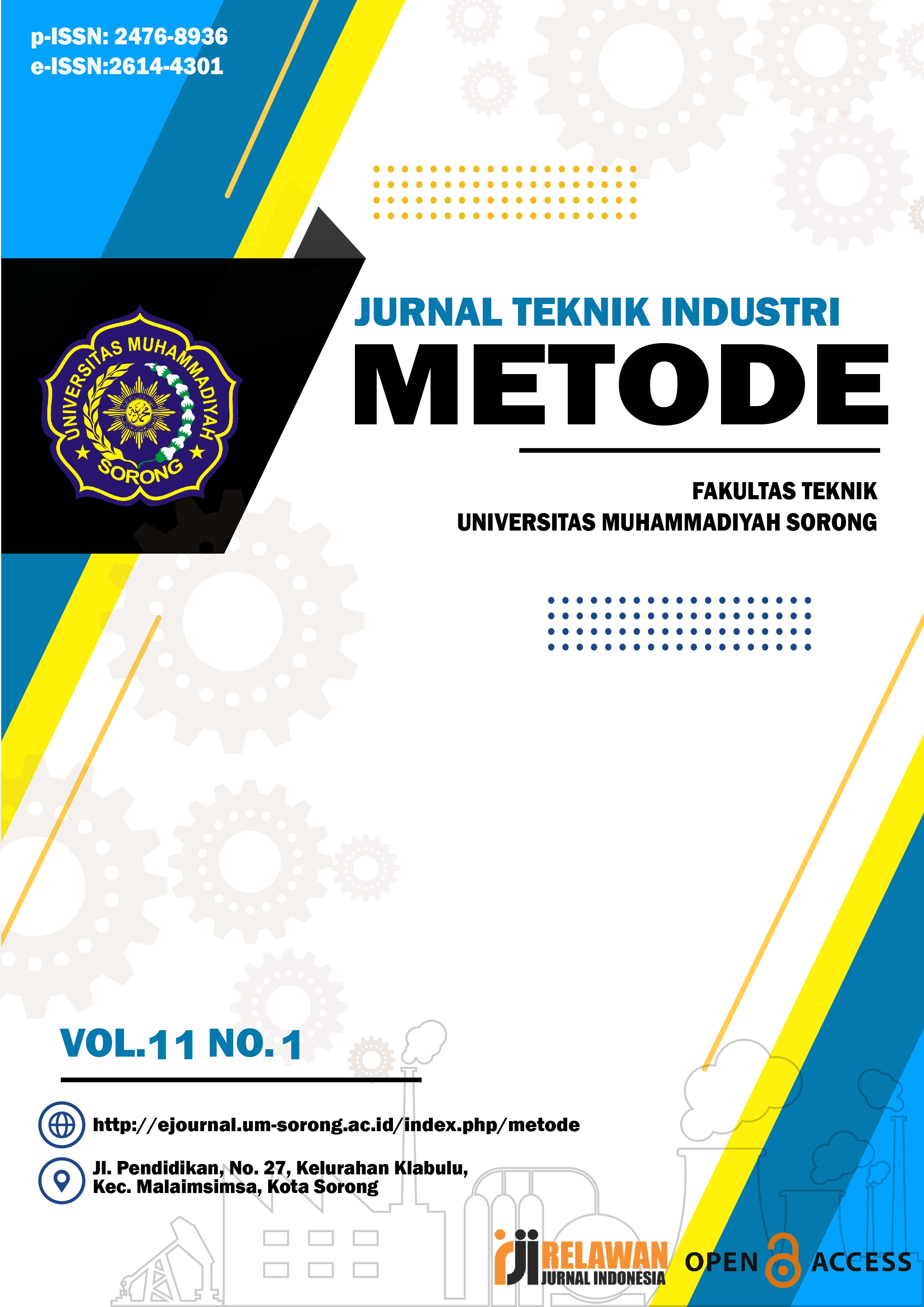Risk Analysis on Critical Asset Units Using House of Risk at Company X
DOI:
https://doi.org/10.33506/mt.v11i1.4282Keywords:
asset, critical, House of Risk, effectiveness to difficulty ratioAbstract
Clean water is one of the basic needs for human life. The toughest challenge related to clean water problems is in the procurement and distribution of clean water. Instability in distribution and supply chain issues has now become one of the company's focuses of attention. The success of the company depends on the structure and alignment of the supply chain design, this can be done if the company is able to minimize the negative effects of the risk of critical assets. Understanding the concept of asset management is important. This study aims to design and implement an asset management policy model in the case of critical assets in Company X, especially in the K water house. After an analysis was carried out using the House of Risk phase 1 and the Pareto diagram, the results were 14 risk agents (Risk Agent) which are a description of 6 risk events (risk events) that are included in the vulnerable and high-risk categories. After an analysis was carried out using the House of Risk phase 2 and an assessment of the Effectiveness to Difficulty Ratio (ETD) value, 22 priority risk management strategies (PA) were obtained. One of these risk management strategies is the policy of installing a soft starter for the pump panel.
References
Achmadi, R. E., & Mansur, A. (2018). Design mitigation of blood supply chain using supply chain risk management approach. Proceedings of the International Conference on Industrial Engineering and Operations Management, 2018-March, 1763–1772.
Anggrahini, D., Dana, P., & Sulistiyono, M. (2015). Managing quality risk in a frozen shrimp supply chain : a case study. Procedia Manufacturing, 4(Iess), 252–260. https://doi.org/10.1016/j.promfg.2015.11.039
AS/NZ Standards. 2004. AS/NZS 4360 SET Risk Management Set. Sidney: Australia/New Zealand Standart.
Davis, R. (2013). An introduction to asset management. www.eatechnology.com
El-Akruti, K., Dwight, R., & Zhang, T. (2013). The strategic role of Engineering Asset Management. International Journal of Production Economics, 146(1), 227–239. https://doi.org/10.1016/j.ijpe.2013.07.002
Frolov, V., Megel, D., Bandara, W., Sun, Y., & Ma, L. (2009). QUT Digital Repository : management . In : Proceeding of the 4th World Congress on Engineering Asset BUILDING AN ONTOLOGY AND PROCESS ARCHITECTURE FOR ENGINEERING. Building an Ontology and Process Architecture for Engineering Asset Management., September, 28–30.
Ghosh, D. (2015). Supply chain length estimation : A study on FMCG companies. 1(13), 726–730.
Hernández, M. L., Carreño, M. L., & Castillo, L. (2018). Methodologies and tools of risk management: Hurricane risk index (HRi). International Journal of Disaster Risk Reduction, 31(August), 926–937. https://doi.org/10.1016/j.ijdrr.2018.08.006
ISO 31000. (2018). International Organization for Standardization ISO 31000: Risk management - Principles and guidelines. Iso 31000, ISO 31000:, 36. www.iso.org
ISO 55000. (2014). Asset management — Overview, principles and terminology. Switzerland.
Peck, H., Abley, J., Christopher, M., & Haywood, M. (2010). Creating Resilient Supply Chains: A Practical Guide. Cranfield University, 100. http://hdl.handle.net/1826/4374
Pujawan, I, N. 2005. Supply Chain Management. Surabaya: Gunawidya.
Rodney, E., Ducq, Y., Breysse, D., & Ledoux, Y. (2015). An integrated management approach of the project and project risks. IFAC-PapersOnLine, 28(3), 535–540. https://doi.org/10.1016/j.ifacol.2015.06.136
Sapri, M., & Razak, S. M. A. (2016). Asset Management Recovery after the Disater: State of Knowledge. MATEC Web of Conferences, 66, 1–9. https://doi.org/10.1051/matecconf/20166600067
Schaefer, T., Udenio, M., Quinn, S., & Fransoo, J. C. (2019). Water risk assessment in supply chains. Journal of Cleaner Production, 208, 636–648. https://doi.org/10.1016/j.jclepro.2018.09.262
Sinha, P. R., Whitman, L. E., & Malzahn, D. (2004). Methodology to mitigate supplier risk in an aerospace supply chain. Supply Chain Management, 9(2), 154–168. https://doi.org/10.1108/13598540410527051
Sitanggang, R., Sutrisno, A., & Gede, I. N. (2024). Evaluasi Risiko Pada Rantai Pasok Industri Pengolahan Kayu. Jurnal Tekno Mesin, 10(1), 73–79. https://doi.org/10.35793/jtm.v10i1.55642
Vaughan, E. J., & Vaughan, T. M. (2007). Fundamental of Risk and Insurance. 10th edition. In John Wiley & Sons, Inc.
Zhou, Z., Liu, L., Zeng, H., & Chen, X. (2018). Does water disclosure cause a rise in corporate risk-taking?—Evidence from Chinese high water-risk industries. Journal of Cleaner Production, 195, 1313–1325. https://doi.org/10.1016/j.jclepro.2018.06.001
Downloads
Published
How to Cite
Issue
Section
License
Copyright (c) 2025 Guntur Samodro, Winda Nur Cahyo

This work is licensed under a Creative Commons Attribution-ShareAlike 4.0 International License.









